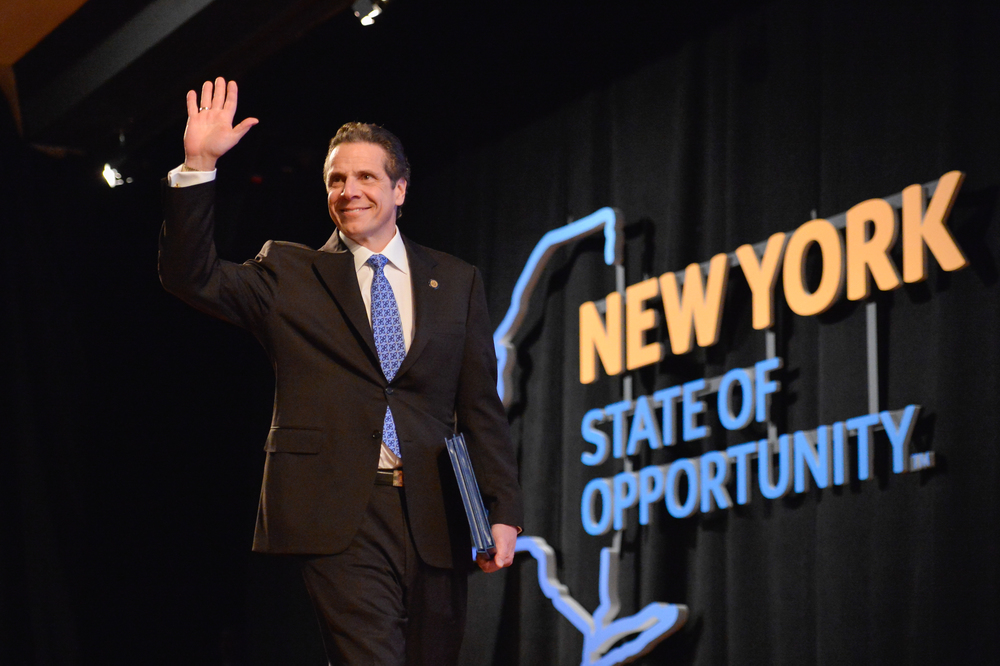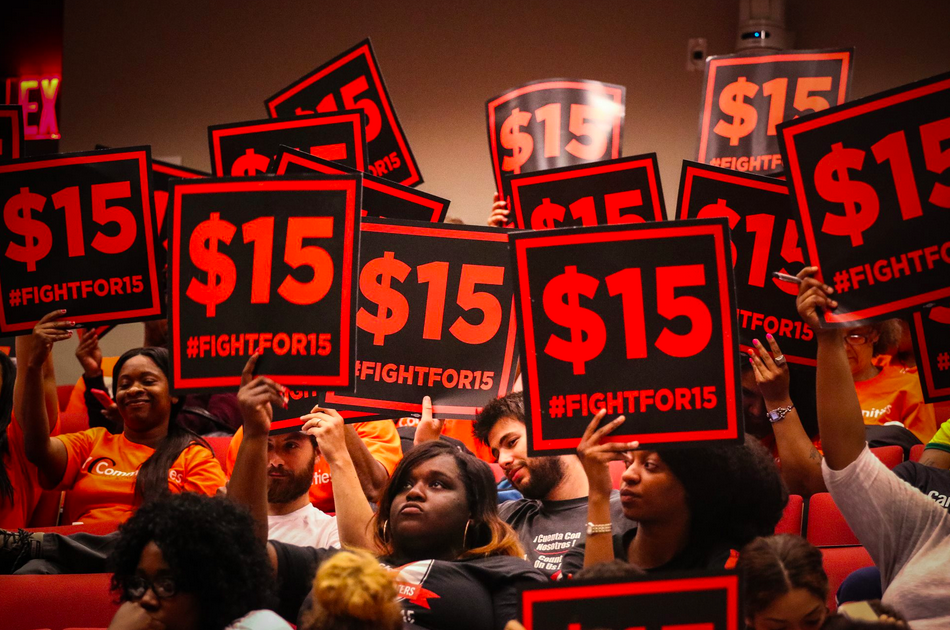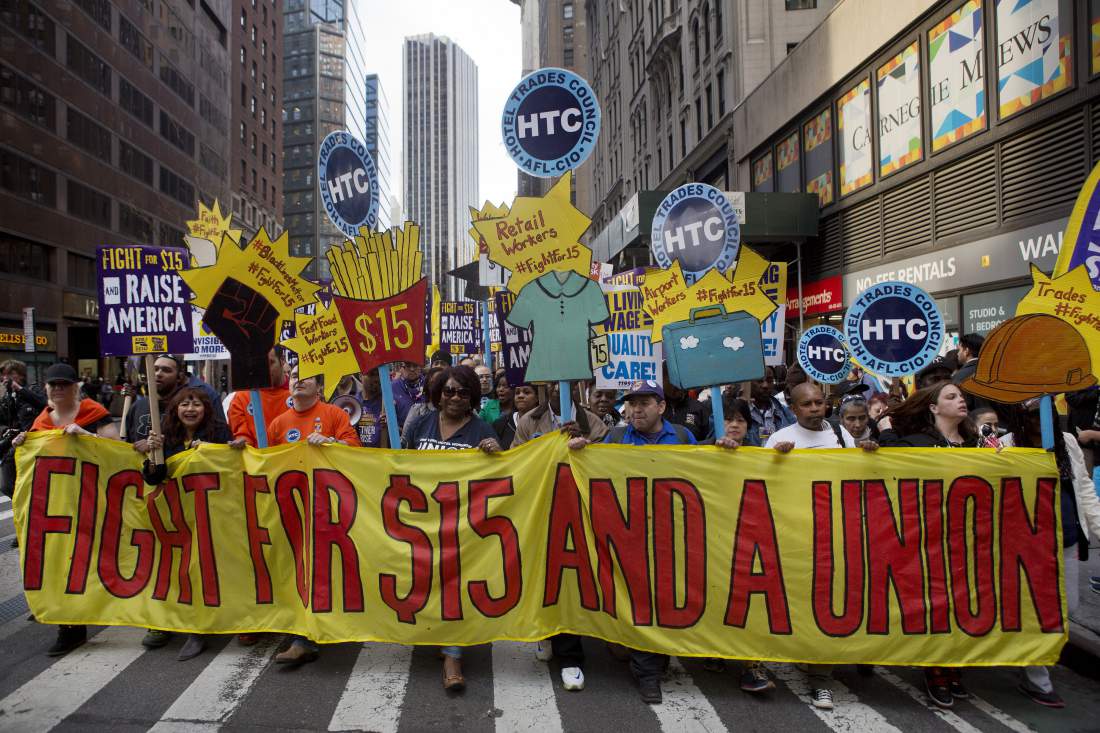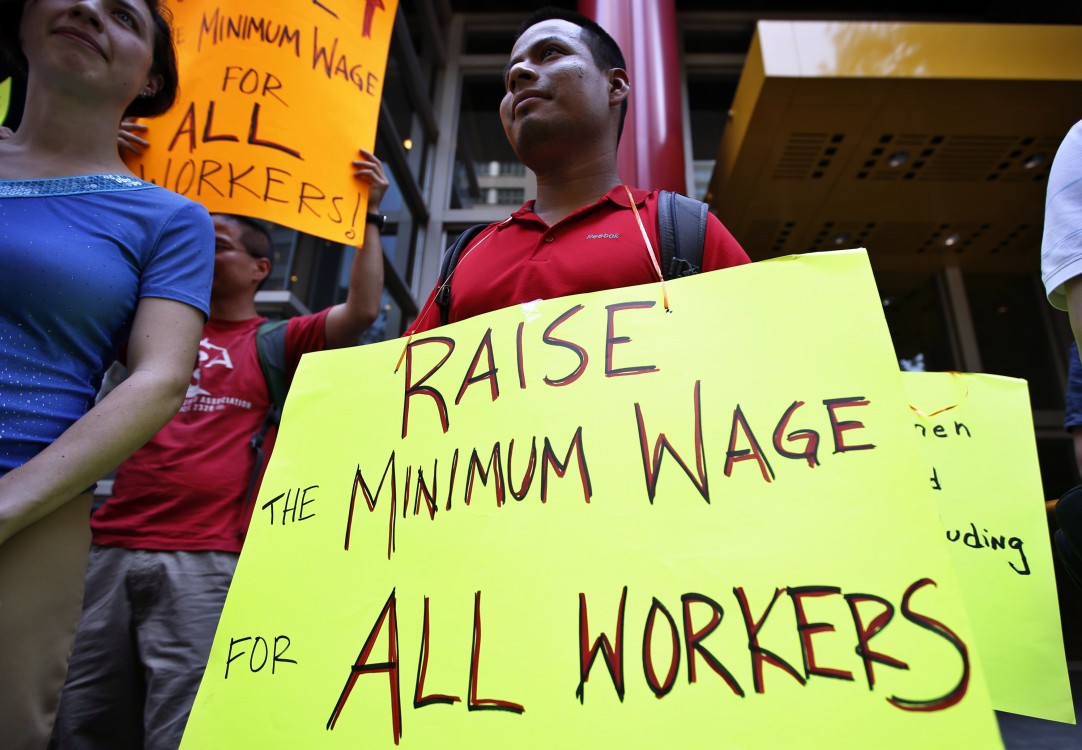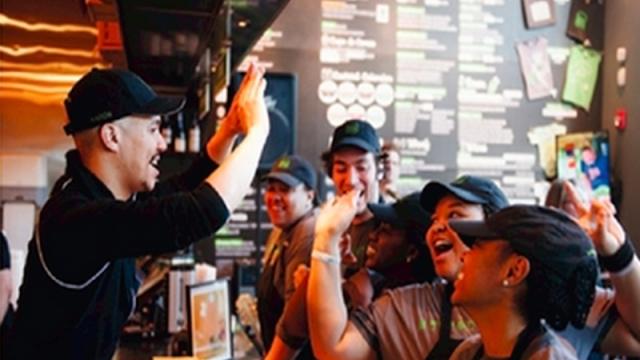
After three years of campaigning, New York's fast food workers are getting exactly what they wanted: A $15 an hour minimum wage.
The boost comes as a result of Gov. Andrew Cuomo's decision to convene a Wage Board, which has the power to set a new minimum for the fast food industry's 200,000 workers in New York without the approval of the state legislature.
On Wednesday, the Board recommended that the new floor be phased in, rising to $15 by the end of 2018 in New York City, and July of 2021 for the rest of the state.
The three-member board arrived at its decision after listening to hours of emotional testimony from workers, unions, and business owners who described both the difficulty of working for the current state minimum wage, and the potential impact of raising it dramatically. The increase still has to go through a comment period and a regulatory process at the state's Department of Labor before becoming final.
Ultimately, the board members sided with workers like Alexandra Candelaria, 21, who testified at a hearing in Buffalo. She lives with six other family members, while struggling with a cancer called soft tissue sarcoma, and works three part-time jobs including one at McDonalds, for $9.25 an hour.
"I work so hard, and I’m only 21. I’m so tired of being sick and tired all the time, and I don’t have time to stop, because I’ve got so many bills," she told the panel at a hearing in Buffalo. "Working my way out of poverty has never been in the cards for me until now. Now I have hope."
The Wage Board's decision is a victory for the Service Employees International Union, which has poured millions of dollars over the past few years into campaigning for a $15 minimum wage nationwide. Los Angeles, San Francisco, and Seattle have put themselves on the path towards that level.
The "Fight for $15" campaign has also racked up several more incremental wins: Massachusetts recently decided to raise the minimum wage for home health care aides to $15 an hour, for example. Major companies like Facebook and Aetna have done so for their own employees, and in Facebook's case those of its contractors.
Just Wednesday, the University of California system announced that all its employees and contractors would also be paid $15 an hour within the next three years.
In New York, Cuomo decided to pursue the fast food industry specifically because it's the largest low-wage employer in the state, and wages had not risen significantly despite robust employment growth, forcing taxpayers to make up the difference through public assistance programs.
"When an industry is not going to correct itself, the government has to step in," said board member Mike Fishman, the SEIU's secretary treasurer.
Industry opposition
The restaurant industry has fiercely fought the idea of targeting one sector with a higher wage, and accuse the governor of setting up the Wage Board to have a predetermined outcome.
"The entire process has been a sham and the cards have been stacked against the hard-working men and women that own and operate New York’s restaurants from day one,” the Save NY Restaurants Coalition said in a statement after the vote.
“Today’s decision will hurt the very people Governor Cuomo is purportedly trying to help. Restaurants will be forced to streamline labor costs through automation and attrition or close their doors completely."
Although the wage hike targets fast food chains with more than 30 outlets nationwide, full-service restaurants expect that they’ll be indirectly affected as well.
“All restaurants, at some level, compete in the same labor pool. Full-service restaurants will have to lift their wages even higher to retain the top talent in the back of the house,” said Kevin Dugan, a spokesman for the New York State Restaurant Association.
"This raise, combined with the 50 percent increase that the previous wage board gave to tipped employees, will force labor costs to dramatically increase for all types of restaurants."
The extent to which the wage hike will actually impact customers, however, is still hard to predict. In places where large wage increases have started to take effect, prices have risen, but so far there’s no solid indication of how those changes have affected sales.
“For something like fast food, you’re not likely to see as big a shift as you would for example clothing retail, where you might go bargain shopping,” said Chris Jones, vice president for research at the Regional Plan Association, which analyzes issues affecting the area where New York, New Jersey, and Pennsylvania intersect. “Someone’s not going to go bargain shopping for a Burger King. They want it where they are."
But Jones cautions that there are ways in which raising wages could actually help restaurants: Workers may stay in their jobs longer, cutting down on turnover costs, and may become more productive. Also, higher wages puts more money in the pockets of people who are the most likely to spend it.
Besides, if prices do go up, there could be a health-related silver lining, said Mike Cassidy, a policy associate at the research-minded Century Foundation. “It’s like a tax on fast food that we don’t want people eating anyway.”
Spillover effects
Rising wages likely won’t be confined just to the restaurant industry. Other businesses that employ low-wage workers are likely to offer more in order to compete for quality workers. Take retail, for example: Workers at a shoe store in the mall are likely going to need a little something extra to keep them from taking a job at the food court.
“We in the retail industry are drawing from the same pool of potential employees, clearly. And we’re not the only ones,” said Ted Potrikus, president of the Retail Council of New York State. “Anyone who’s paying under $15 an hour is going to have to look at what they’re offering to get good employees.”
Eventually, the spillover effect might get another nudge from the governor. Cuomo resorted to a wage board only after his proposal to raise the state minimum wage to $10.50 an hour across the state and $11.50 in New York City — which most of the state’s business community also opposed — failed in the legislature.
Last week, he started moving on another front, convening a task force to investigate abuses in other low-wage industries. That will likely lead to a series of reports, which may undergird a renewed push to raise the state minimum wage across the board. That’s the approach that economists tend to prefer anyway.
“In terms of economic efficiency, it would be better to impose it generally,” said Isaac Ehrlich, chairman of the economics department at the State University of New York-Buffalo.
And this time, it may be successful, because of the shifting politics around the issue. “This thing polls so highly,” said Potrikus of the retail council, who bucked the state’s business community and backed the first minimum wage proposal.
“Ninety percent of New Yorkers want an increase in the minimum wage. I really want 90 percent of New Yorkers to come into my store. Maybe I should support this.”
From here, the SEIU is likely to take the sector-specific fight to other states with laws that empower governors to unilaterally raise wages. But first, the model being forged in New York will likely face more tests. The Wage Board process is settled law in New York — Cuomo’s predecessor, Gov. David Patterson, used it to raise wages for tipped workers in 2009 — but that hasn’t stopped a coalition of franchisees from hiring a high-powered lawyer to fight it.
That’s why the Wage Board sought to back up its determination with evidence. At the announcement Wednesday afternoon, a representative from the federal Department of Labor presented data showing that the cost of living statewide is $15.91, and that the average fast food worker makes far below that.
"These guys have undergone this process with an expectation that there will be aggressive challenges because of what it could mean for other cities and states and the growing movement,” said Neal Kwatra, who served as a labor representative on the 2009 Wage Board, and now consults for the New York State Democratic Party. "You want a step that’s not going to be a detriment."
3 WAYS TO SHOW YOUR SUPPORT
- Log in to post comments

